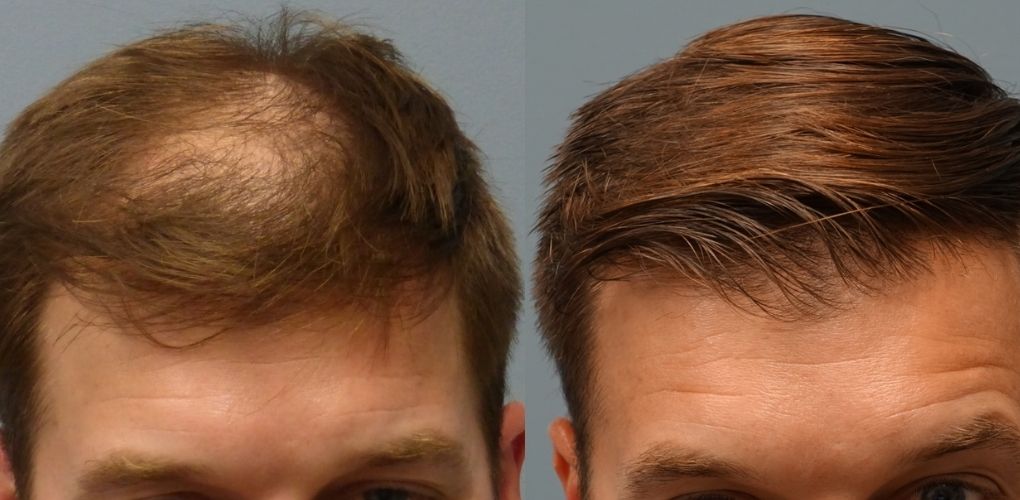What is the Hair Transplant Cost in India?
Hair transplant is the type of surgery that aims to restore the growth of the hair on the scalp or the area with limited or absent growth. It is one of the effective treatments for significant types of hair loss. But, these types of treatments cannot control future hair loss. For long-lasting effects, people may opt for hair loss treatment plans that give them the surety of having hair on their limited growth area.
Hair Transplant cost in India is different- different in multiple cities. The average cost of a hair transplant in India starts from Rs.25000.
The Hair transplant cost in India depends on various other factors and you may require to consider each factor before getting the plan.
The hair transplant cost in cities:
Delhi: Rs.25,000-Rs.100000
Mumbai: Rs.30,000-Rs.1,20,000
Kolkata: Rs.35,000-Rs.80,000
Gurgaon: Rs.40,000-Rs.75,000
Chennai: Rs.70,000-Rs.1,40,000
Table of Contents
- Hair loss and thinning hair are the normal consequences of aging. They can also occur because of medical traumas and certain medical conditions like rashes in the head or certain body parts or cancer.
- People often experience hair loss because of cosmetic and reconstructive reasons.
- Plenty of products promise to stay with the volume of the hair and help to grow the hair on the limited hair growth area. However, some of them are effective and some of them do not produce any effect.
- The best way to add hair to a limited hair growth area is to have a hair transplant. But many people wonder how effective these treatment plans are. This makes them interested in knowing the multiple factors that relate to hair transplant cost in India.
Types of Hair Transplant
While pursuing a hair transplant, a surgeon may remove the hair follicles from the dense area such as the back of the head. Then they implant the hair follicles on the impacted area of the scalp. In general, there are two types of hair transplants. These are:
- Follicular unit strip surgery (FUSS)
In this method, the surgeon will remove the skin from the donor area and will close the area using stitches. With the help of a microscope, they will separate the area of the skin into tiny follicular units containing several hair follicles. Later, they will insert this unit in the desired or impacted area.
- Follicular unit extraction (FUE)
In this method, the surgeon will use a tiny punch tool for removing the hair follicles from the donor area. This method does not require stitching. However, it may lead to scarring of the skin, which is less noticeable.
Effectiveness of both the Techniques
Both of these techniques are effective in achieving the desired results. It is found that the FUE technique takes a longer time than FUSS but FUE can give you better results. However, in both cases, the experience of the surgeon matters a lot.
- In general, the surgeon may use the backside of the head to transfer hair follicles from the area to the impacted area. However, they may also proceed with the skin from the chin, back, or chest where there is effective growth of hair.
- They may also require to use of body hair which is also an effective part of the treatment. The hair follicles should not be thick and as light as the hair of the head. Therefore, the surgeons may utilize the hair of the beard or body parts including the chest. This can be less time-consuming and may require more skills of the surgeon to use the hair scalp.
- According to various reports, the body and beard are an excellent sources of donor’s hair for hair transplant. Whatever procedure you choose, it may take several hours depending on the follicles and the steps that the surgeon chooses to proceed with. Both of these treatments of hair transplant require the need for local anesthesia. It may take one day and does not generally require a hospital stay.
What is the success rate of both of these treatments?
Hair transplant is effective for regaining or restoring the growth of the lost hair follicles. The success rate of the hair transplant generally depends on various factors including the skills and experience of the surgeon and the quality of the donor’s hair. Hair transplant is the type of treatment that leads to modest changes.
- For huge noticeable changes, you can wish to choose skin flap surgery, scalp reduction techniques, and tissue expansion. To date, there is no story and study of hair transplant being unsuccessful for any type. It usually produces effective results.
- However, there can be variations in the effectiveness of the two different types including FUE, and FUSS. The majority of people go for FUE surgery. This is because it allows the surgeon to utilize body hair and beard hair over the impacted area for satisfying results.
- If you ask about the success rate of each type of hair transplant, there will be mixed results showing at least 70% of success out of 100%. Also, using the platelet-rich plasma (PRP) therapy along with FUE increases the success rate of the treatment. People may find an increase in their 75% of hair growth effectively in 6 months.
How much does it cost to have a hair transplant in India?
Know about hair transplant cost in India here –
- The minimum price that you can assume for a hair transplant is nearly INR Rs.25,000
- The average hair transplant cost in India is nearly INR Rs.57,633
- It can lead to maximum charges with an overall cost of INR Rs.2,65,000
However, certain factors can alter the procedure of hair transplant in India. These factors are:
- The extent of hair loss
- Area to be treated
- Number of grafts you choose to transplant
- Texture and characteristics of hair
- Admission fee
- Surgeon fee
- Age of the patient or overall health
- Type of Hair Transplant
- The medical condition of the patient
- Complications of the transplant type
You can seek information from your insurance company. Most insurance companies provide cost-effective hair transplant procedures as part of cosmetic surgery and reconstruction. Also, the Hair transplant cost in India depends on many other factors. This may include:
- The area where you live: some demographic areas have a high cost of hair transplants. This is because of the less availability of surgeons in the area and high professionalized skills.
- The type of procedure you choose: there are two different types of procedures for hair transplant. These are FUE and FUSS. Each of these types has different costs.
- The skill of your surgeon: Somes surgeons charge for their machines and the type of treatments they follow. It also includes their skills and other taxable charges. At the same time, you may notice that superior skills don’t mean that you should be changed with higher rates. It should be reasonable according to the market rates. So, you may require to have research in this area.
- The amount of hair you want to transplant: wanting just a patch of hair follicles may not hamper your cost or pockets. It will be less cost-effective than the entire scalp.
- Travel costs: this is something that your surgeon will not cost, but you should consider the price of your traveling area because this may hamper your overall cost. If you can afford the whole procedure including the rent of the area for staying at least one or two days, then only you should go for the surgery. Otherwise, you can ask for the procedure somewhere in your local area.
Are there any charges for recovery from the hair transplant surgery?
In addition to treatment costs, there can be potential charges of recovery. You should consider the amount of the following after you have received your hair transplant surgery:
- Medications for the fast recovery from the surgery
- Use of anti-inflammatory medications that may help you recover faster from swelling after the surgery
- Use of antibiotics to reduce the possible risk of infection
If you or anyone you know is going through adverse changes in hair transplant treatments, you can consider talking to the experts of any hair transplant hospital in your city. If you are experiencing complications, you may require treatment for it. Most of the time, these complications include potential infections that hamper the treatments. Also, the recovery from complications can affect your overall cost with additional charges of the travel cost to visit the doctor and the cost of additional medications in case of emergency.





0 Comments